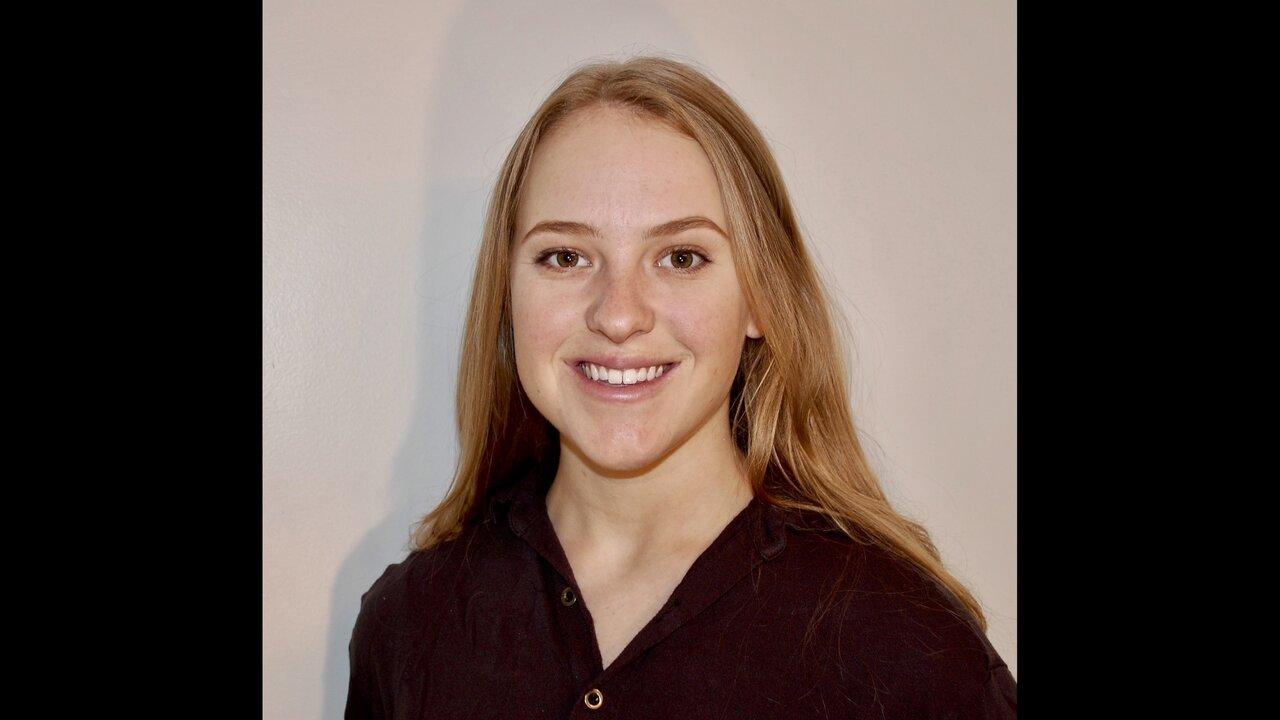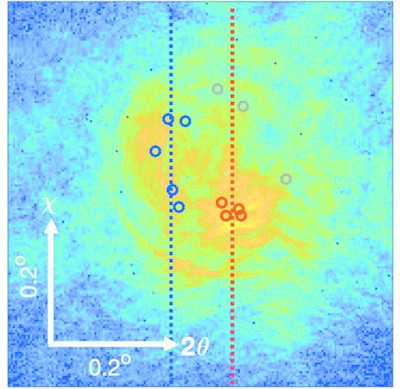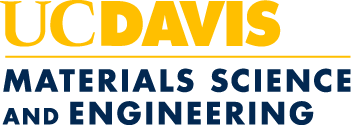
Undergraduate research in Kukreja Lab outlines novel nano-diffraction analysis method
Materials science and engineering (MSE) former undergraduate researcher Joyce Christiansen-Salameh has developed a new way to analyze complex x-ray nano-diffraction datasets using a k-means clustering algorithm. The program iteratively groups data points by clustering pixels with similar intensity within a certain distance on the detector, which makes it easier to find the Bragg peaks that reveal the structure.
Using this new method to unravel the nanodiffraction dataset gave the team a fundamental understanding of how ferroelectric materials’ polarization domains behave at nanometer lengthscales, which is the first step toward using them in non-volatile computer memory. The results were published in the January 2021 issue of the Journal of Synchrotron Radiation and featured on the cover.

X-ray nano-diffraction is a way to describe the structural properties of a material, such as lattice spacing, local strain and tilt of sample planes. In x-ray nanodiffraction, samples are illuminated with a nanometer-sized x-ray beam, which creates a diffraction pattern that can be used to reveal structural information. “Imperfections” in samples like irregular spacing or a mosaic pattern can result in complex diffraction pattern, which makes it challenging to read, analyze and infer structural information from.
“The patterned ferroelectric thin film was highly mosaic, and that resulted in complex diffraction pattern, so you kind of had this data set where the Bragg peaks weren’t clear,” said Christensen-Salameh, who led the study. “We realized that the data analysis method that had been used before wasn’t going to work.”
Christiansen-Salameh joined the lab as an undergraduate researcher after taking assistant professor Roopali Kukreja’s class and soon began working with her on understanding the nanoscale behavior of ferroelectric oxides.
“[Professor Kukreja] shared her research in one of her lectures and I remember thinking, ‘that’s so interesting. I really want to be a part of that,’” she said.
Since she was interested in coding and computer science, Kukreja thought she would be a good fit for the project, as a new computational method might be the solution to analyzing the diffraction pattern of a thin film of ferroelectric lead zirconate titanate [Pb(Zr₀.₂Ti₀.₈)O₃].
After a lot of trial and error with increasingly complex solutions, Christiansen-Salameh found the k-means clustering algorithm to solve the problem. The solution worked for the Pb(Zr₀.₂Ti₀.₈)O₃ and the group was able to successfully map out the thin film’s strain at nanometer lengthscales. The results were published in the January 2021 issue of the Journal of Synchrotron Radiation and featured on the cover.
“I’m very excited about it,” she said. “That’s not something I was expecting at all when I joined the research group.”
Christiansen-Salameh graduated in 2019, motivated to pursue her M.S. in materials science engineering at Cornell University—something she hadn’t previously planned to do. She is happy to have had the undergraduate research experience and is grateful for the opportunities she had to perform experiments at national labs like SLAC National Accelerator Laboratory
“Joining a lab, even if you don’t plan on going to graduate school, can really help you as an engineer,” she said. “Research labs give you the opportunity to do a lot of exciting things, even if you’re an undergraduate.”
